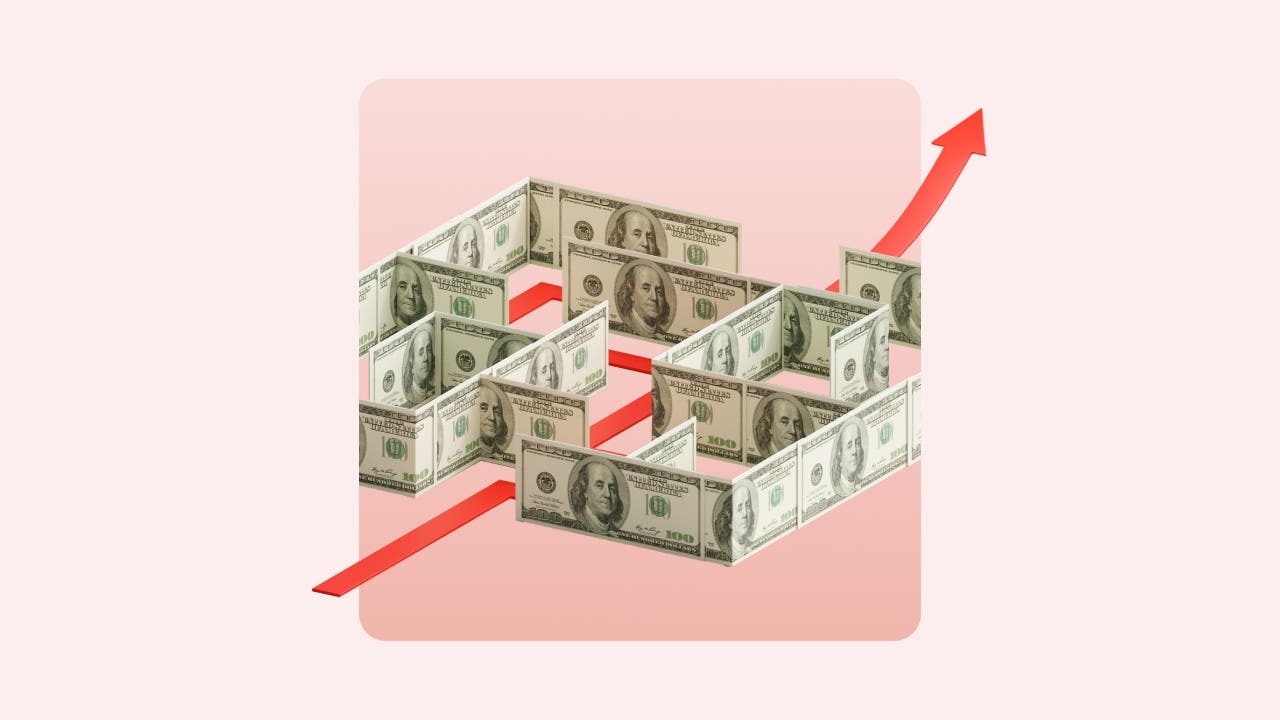I wrote about personal loans for the last year. Now I’m ready to bust some myths.

Key takeaways
- As an unsecured loan product, personal loans are versatile tools for the savvy borrower — but common misunderstandings may keep people away from them.
- With today’s lenders, personal loans are easier to get than many borrowers expect, and APRs are lower on average than what credit cards or payday loans charge. If you have excellent credit, the rates may even rival what a HELOC offers (with no risk to your home).
- Though many believe you can use a personal loan for anything, there are limits: You are barred from using them for mortgage down payments or funding postsecondary education tuition.
After deep-diving into the personal loan world for the past year, I honestly can’t understand why more people don’t choose them. They offer a credit score safety net and clear pay-off date that credit cards can’t match. And because they’re unsecured, you don’t risk losing your shelter or transportation like you would with home equity or auto loans.
This leads me to believe that misconceptions about personal loan rates and the broad range of products available under the personal loan umbrella may prevent consumers from understanding both their benefits and limitations.
“A consumer may make false assumptions based on information that is read online or received from other sources,” says Barry S. Coleman, vice president of program management and education at the National Foundation for Credit Counseling. “Could be information gathered from a friend or family member [or] based on their own personal experiences.”
Dispelling those myths may give you a clearer view of whether they fit your borrowing needs.
Common personal loan myths
Personal loans are hard to get
You might think that a loan based entirely on your credit and income might require more approval hoops than one secured by a car or home. After researching dozens of personal loan products, I’ve found that getting a personal loan, for the most part, only requires a regular paycheck and good credit.
Plus, there’s very little paperwork involved. Because they are unsecured, there’s no vetting of an asset (like a home appraisal for a mortgage). Funds can be delivered sometimes the same day, much faster than the weeks or months it can take to complete a home equity loan.
Greg McBride, chief financial analyst for Bankrate, suggests that misconceptions may lead consumers to rely on credit cards because they’re familiar with them.
It is hard to beat the convenience of credit cards, and prospective borrowers may be unwilling or unable to wait until the loan proceeds are deposited into their account. Even though borrowers with good credit may find much more competitive rates on a personal loan than what their credit card is offering, there may be an unawareness of the possibility of a better rate, or a fear of the application being declined.— Greg McBride, CFA
The APRs are too high
Before I began writing about the personal finance industry, I had a preconceived notion that personal loans and payday loans were pretty much the same. Part of this misconception is from all the news about the predatory nature of payday loans, which are technically personal loans with triple-digit annual percentage rates (APRs).
I was surprised to learn that some personal loan lenders offer lower APRs than home equity lenders. Even bad credit personal loan rates don’t usually exceed 35.99 percent, and repayment terms can be as long as seven years.
However, the average personal loan rate is 12.31 percent as of December 2024, far lower than credit card rates, which currently average over 20 percent. With such a vast difference in rate, it’s surprising to me that TransUnion’s second quarter 2024 data shows a total of 545.1 million credit cards compared to 28.8 million personal loans.
Below are the personal loan average rates based on credit score.
|
Credit score |
Average loan interest rate |
| 720-850 | 10.73%-12.50% |
| 690-719 | 13.50%-15.50% |
| 630-689 | 17.80%-19.90% |
| 300-629 | 28.50%-32.00% |
You can use a personal loan for a home down payment
I spent over two decades in mortgage lending, and there’s no way around it: You cannot use unsecured funds for a down payment. That includes funds from a credit card or unsecured personal loan.
Whenever an aspiring homeowner came to me asking about borrowing down payment money, alarm bells went off in my head. If you need to finance your down payment, you’re not quite financially ready to own a home. The extra payment may also make it harder to qualify, especially with house prices, homeowners insurance and mortgage rates sitting at record highs.
Unscrupulous loan officers may suggest you take out an unsecured loan, deposit the money and then let it “season” for 60 days before you apply for a mortgage. This is because, technically, the source of funds sitting in an account for more than 60 days doesn’t have to be documented. However, it’s considered mortgage fraud if you turn around and use unsecured borrowed funds toward a down payment, regardless of how long it’s been sitting in the bank.
Funds from a personal loan can be used for college tuition
Since student loans are essentially a type of unsecured personal loan used to pay for a college education, it might be easy to assume personal loan funds could be used to pay for college-related expenses. In fact, many personal loan lenders advertise that the funds can be used for just about any legal purpose.
However, if you read the fine print at most personal loan lenders, you’ll find that they expressly prohibit using the funds to pay for college tuition. Also, there is no deferment, income-based repayment, or forgiveness. If you use personal loan funds for student tuition with a lender that doesn’t allow it, you could end up in legal trouble beyond defaulting.
You should never use funds personal loans for living expenses
Borrowing money for living expenses isn’t a good idea, regardless of what type of loan you get. However, an emergency personal loan may be a lifesaver if you have a sudden expense that cleans out your cash account.
Getting a personal loan takes longer than swiping a credit card, but many online lenders advertise same- or next-day funding. Plus, you can spread the payment out for as long as seven years, giving you extra time to replenish your emergency fund. And since it’s an installment loan, you won’t risk hurting your credit utilization ratio by maxing out credit cards.
You need good credit to get a personal loan
It might seem logical to think that getting a loan with no collateral would require higher credit scores than getting a secured loan. However, personal loans are available for borrowers with scores as low as 500 or lower. The catch is that bad credit loan rates can exceed 30 percent, with fees of over 10 percent of the loan amount.
But bad credit loans can be a stepping stone to better credit if you use them to consolidate credit cards and use the savings to pay off the balance quickly.
Consolidating debt is just the first step in a two-step process. The second and most important step is to take advantage of the lower rate and single monthly payment on the consolidation by using this to accelerate debt repayment. Otherwise, you’re just moving around deck chairs on the Titanic, putting yourself at risk of running up the credit card debt all over again, and now having both the consolidation loan and the new credit card debt.— Greg McBride, CFA
Home equity rates are lower than personal loan rates
This may be true for the average personal loan borrower since home equity loan rates typically stay in the single digits. On the other hand, excellent credit borrowers may qualify for excellent credit loan rates that are lower than what home equity lenders offer.
I became familiar with personal loans after working as a loan officer at a major bank branch. I had always assumed they were only offered to excellent credit borrowers. However, I quickly learned they were a popular debt consolidation tool for borrowers who didn’t want to leverage their home equity to pay off debt.
The approval and funding process is much faster and simpler than for a mortgage loan, and rates may be the same — or in some cases lower — than for home equity loans. A bonus: Homeowners leave their hard-earned equity alone and eliminate the risk of foreclosure that comes with mortgage loans.
Borrowers disciplined enough to avoid credit card use often qualified for better mortgage rates three to six months after using a debt consolidation loan to pay off revolving credit balances.
Bottom line
Personal loans can be a powerful financial tool, giving you access to funds quickly to accomplish a variety of financial goals. They are an excellent alternative to secured loans because they don’t put your assets at risk, but there are some limits to how you can use funds. They aren’t marketed as heavily as credit cards or mortgages, which may lead to misunderstandings about how they work and who they benefit. Do your homework before you take out any loan to ensure you aren’t making your decision based on other people’s misconceptions.
You may also like

Are personal loans considered taxable income?

7 steps to get the best auto loan rates

8 ways to spot personal loan scams and protect your finances



